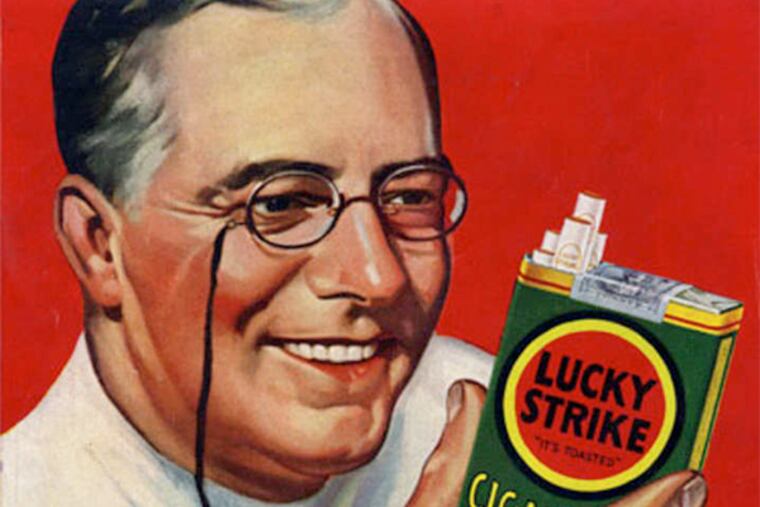Check Up: Pa. subsidizes films featuring smoking
Janet Golden, a history professor at Rutgers University-Camden, wrote this for "The Public's Health" blog on philly.com and inquirer.com. Pennsylvania is one of 11 states that subsidized 93 percent of recent top-grossing movies featuring characters who smoke, according to researchers at the University of California, San Francisco - and one of seven states that gave more money to those movies than it spent on tobacco prevention.

Janet Golden, a history professor at Rutgers University-Camden, wrote this for "The Public's Health" blog.
Pennsylvania is one of 11 states that subsidized 93 percent of recent top-grossing movies featuring characters who smoke, according to researchers at the University of California, San Francisco - and one of seven states that gave more money to those movies than it spent on tobacco prevention.
Pennsylvania subsidized production of 24 movies from 2008 to 2012, of which 16 (57 percent) included smoking, according to an ad placed in State Legislatures magazine by SmokeFreeMovies, a project of UCSF professor Stanton Glantz. It says the industry got $18 million a year in subsidies from the commonwealth for movies that showed smoking. It spent $14 million in 2012 on smoking prevention.
"Seven states are now spending more subsidizing movies that promote smoking to kids than they are spending fighting smoking," Glantz, director of UCSF's Center for Tobacco Control Research and Education, writes about the ad on the center's blog.
Connecting subsidies with content "is absolutely ridiculous," responded Steven Kratz, a spokesman for the Pennsylvania Department of Community & Economic Development. "The film tax credit is about bringing jobs and investment to Pennsylvania and not an endorsement of film content or actions taken by characters in a film," he wrote via e-mail. "Clearly the researchers need to be talking to the film industry with regards to smoking in films, not the states that are trying to create job opportunities for their citizens."
The health department, which oversees prevention, declined to comment.
Glantz's post comes 50 years after the U.S. surgeon general released the first Report on Smoking and Health. "It hit like a bombshell," recalled then- Surgeon General Luther L. Terry. The report, drawn from over 7,000 articles and 150 consultants, made clear that smoking caused big increases in deaths and illness.
Tobacco advertising was everywhere in 1964 - on television, radio, magazines, newspapers, signs, and billboards. Many ads featured physicians, with lines such as "More doctors smoke Camels" and "20,679 physicians say Luckies are less irritating." Films were filled with smoking scenes.
Research has found a direct link between smoking shown in movies and the likelihood that viewers will smoke. Today there are laws restricting tobacco advertising. Yet smoking scenes in movies have become more common recently. According to UCSF calculations, movies with smoking recruited 750,000 new U.S. smokers ages 12 to 17 between 2008 and 2012.
Here's the kicker: 50 years after the surgeon general's warning, taxpayers are subsidizing movies that induce young people to start smoking.